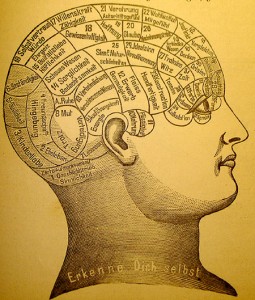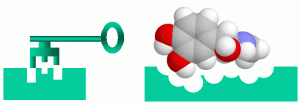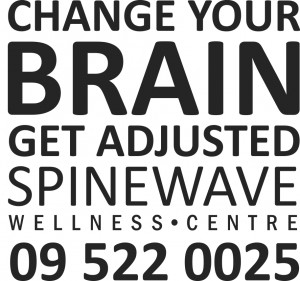 Everything’s connected.
Everything’s connected.- Success is based on the brain’s ability to reorganise itself.
- Mechanical medicine is not the whole picture.
In the video below, half of the little girl’s brain is removed, in a procedure called a hemispherectomy, after she had multiple brain-damaging seizures. The brain then rewires itself to resume normal function of the whole body as best as possible. So if you subscribe to the premise that left controls right, right controls left; the back is for vision; the sides for temperament and the front for judgement, you’d only be half right.
“Neuroplasticity refers to the lifelong capacity of the brain to change and rewire itself in response to the stimulation of learning and experience. Neurogenesis is the ability to create new neurons and connections between neurons throughout a lifetime.”
Everything’s connected. The nervous system is ubiquitous and communicates at the speed of light. Well, almost. Recently it was proven that neutrinos travel faster than light which has tilted Einstein’s relativity on its head. But for now, the nervous system communicates in frequencies, with wave fronts. You might have learnt in science class that a light photon can take the form of a particle or a wave. That is to say, something mechanical and tangible, or something energetic and intangible. Modern medicine treats the human system as a mechanical unit: organs broken are replaced; prescriptions for chemicals missing are refilled; and electrical information bounces over myelin sheaths along nerve endings to reach the ends of the body. While it may be true in part, that viewpoint is simply too slow. The body is performing millions of tasks simultaneously, all the time. There is far more to the body’s communication and healing system than meets the eye.
Success is based on the brain’s ability to reorganise itself. In the 1960s, Karl Pribram suggested that the brain (and central nervous system) functions with holographic properties because of the innumerable connections of neurons and their branches, setting up a kaleidoscope of criss-crossing electrical wave patterns throughout the body.
Holographic means the “whole” is represented in each and every smaller part. Like reflexology for example – most of the body being mapped out on the underside of the foot. Pribram said that these neuronal networks send resonating frequencies to other sets of neurons. Then that set passes it onto a third set of neurons with the same resonance, like a cloud that gets bigger and bigger. The cloud eventually constructs a pattern, and that pattern is interpreted as a message. Or a visual image.
Wave interference is a shorthand task for the brain and incredibly quick in its communication. It can scatter patterns throughout the brain’s networks like a group email where everyone is notified simultaneously. What this also means is that one area of the brain does not necessarily have to be responsible for its supposed “man-denoted” task, like word formation for instance. After injury, the brain can reorganise and rewire itself so well-functioning areas can take over the tasks of poor-functioning areas. This is called plasticity and trumps the archaic idea of phrenology – the study of mapping bumps on one’s head and correlating them with certain personality traits and functions c.1800. It’s the reason why stroke victims can oftentimes recover with the right kind of attention, e.g. chiropractic care and rehab combined.
“The axolotl salamander is the highest, most complex organism that can still do this clever trick of completely reconstructing a whole body part in adulthood – Arlene Chiu, Scientific Advisor for the Regeneration Project.”
 From a book called The Field by Lynne McTaggart, she cites research done by a biologist named Paul Pietsch who did not believe Karl Pribram’s theories about the distributed role of memory and the wave front language of the brain as a hologram. In an effort to disprove Pribram, Pietsch discovered that he could remove the brain of a salamander, and although the animal became comatose, it would resume functioning once the brain was put back in. If Pribram were right, then some of the salamander’s brain could be removed, or reshuffled, and it shouldn’t affect its ordinary function. But Pietsch was certain Pribram was wrong and the creature’s brain function would be horribly altered. In more than 700 experiments, he cut out scores of salamander brains and tampered with them before putting them back. He reversed, cut out, sliced away, shuffled and even sausage-ground them. But no matter how brutally mangled or diminished in size, whenever what was left of the brains was returned to the salamander and it had a little time to recover, they returned to normal behaviour! From being a complete skeptic, Pietsch turned convert to Pribram’s view that information is distributed throughout the brain holographically.
From a book called The Field by Lynne McTaggart, she cites research done by a biologist named Paul Pietsch who did not believe Karl Pribram’s theories about the distributed role of memory and the wave front language of the brain as a hologram. In an effort to disprove Pribram, Pietsch discovered that he could remove the brain of a salamander, and although the animal became comatose, it would resume functioning once the brain was put back in. If Pribram were right, then some of the salamander’s brain could be removed, or reshuffled, and it shouldn’t affect its ordinary function. But Pietsch was certain Pribram was wrong and the creature’s brain function would be horribly altered. In more than 700 experiments, he cut out scores of salamander brains and tampered with them before putting them back. He reversed, cut out, sliced away, shuffled and even sausage-ground them. But no matter how brutally mangled or diminished in size, whenever what was left of the brains was returned to the salamander and it had a little time to recover, they returned to normal behaviour! From being a complete skeptic, Pietsch turned convert to Pribram’s view that information is distributed throughout the brain holographically.
Mechanical medicine is not the whole picture. There are two worlds: the observable, or manifest, and the unobservable, or unmanifest. More happens beyond our conscious awareness than can be fathomed. Modern medicine has grown from the place of observation and logical correction. For instance, the heart is simply a mechanical pump with chambers and pipes. Keep the pipes clean and the chamber doors oiled and there will be no risk of heart attack. Yet a large majority of heart attacks hardly ever show evidence of atherosclerosis – but how many people take cholesterol lowering drugs everyday?
 The heart is an energetic entity at the centre of our being with its own magnetic field, resonance and frequencies (some of which we actually measure at Spinewave). It responds to electrical impulses, chemical signals, hormonal influences, humoral or immune hints from the blood stream, and even thought. However the heart is almost always treated medicinally by “lock-and-key” hypothesis. An enzyme reacts with a substrate to form a “complex” that turns something on. Again, like believing left brain controls right and vice versa, it’s only half the story. Or maybe even a hundredth of the story!
The heart is an energetic entity at the centre of our being with its own magnetic field, resonance and frequencies (some of which we actually measure at Spinewave). It responds to electrical impulses, chemical signals, hormonal influences, humoral or immune hints from the blood stream, and even thought. However the heart is almost always treated medicinally by “lock-and-key” hypothesis. An enzyme reacts with a substrate to form a “complex” that turns something on. Again, like believing left brain controls right and vice versa, it’s only half the story. Or maybe even a hundredth of the story!
Energy abounds in the unmanifest and how our bodies actually work below the level of the conscious is mostly a mystery. But the chiropractor knows that by virtue of appropriate stimulation via an adjustment at the right time and place, the brain will begin to reorganise itself through the innumerable holographic, wave front connections the nervous system uses to continually be aware of itself. Along these nerve lines of the unmanifest resides what one might call spirit. Spirit extends far beyond the realm of lock-and-key. And its healing potential is far, far greater.
© Dr Neil Bossenger 2011

